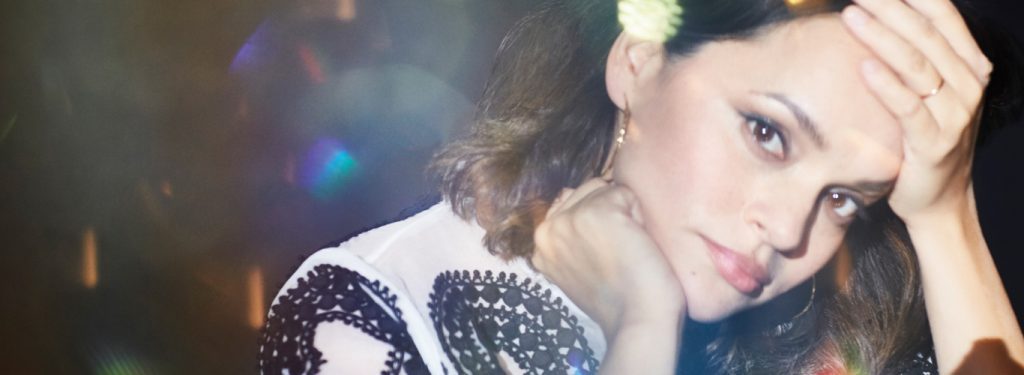
Norah Jones can do whatever she wants as an artist, it seems. Since she broke on the scene in 2002 (though she still spent years putting in dues before that, shouts to Wax Poetic, shouts to Peter Malick), Jones’ varied musical interests have sprawled out impressively to create a body of work that includes jazz, folk, country, indie pop, rock, and the indefinable but certainly pleasant. She has amassed a litany of collaborators. She’s shown astute awareness of her image in popular culture (her appearances in Seth MacFarlane’s Ted and David Wain’s They Came Together are clever, her starting foray in Wong Kar-wai’s My Blueberry Nights was kind of soporific but still worth checking out at least once). In essence, Norah Jones has for her artistic career been adept at expressing her creative urges in a public sphere and has always been satisfying as a musician. For her to take so many turns while still sounding so definitively her is an accomplishment. For her to return to the kind of sound that brought her to our collective attention in her new Blue Note album, Day Breaks, isn’t merely a return to form but yet another instance of Norah Jones doing whatever she wants as an artist and still, as usual, succeeding.
[arve url=”https://www.youtube.com/embed/-ztI0bEvHzI”/]
This natural feeling is based on these songs sounding truly like the culmination of a body of work. If a person is in essence a collection of memories, Jones’ forays into different genres still pop up every now and then throughout Day Breaks. When she went off in more pop directions in 2009’s The Fall or 2012’s Little Broken Hearts, these albums also still sounded very much in her range. They didn’t sound like unnatural decisions. Her ease in her voice and her talent as a musician made these albums fi just as well within her canon. In that regard, they also sound like part of the formulation of some of the songs here on Day Breaks. The light jogging pace of “Flipside” or the spaciness of the title track don’t exactly sound like jazz but with the genre expanding as it does in this era, particularly with Jones’ talent and influence, it doesn’t really matter. These songs still fit with more traditional fare like “And Then There Was You”, “Once I Had a Laugh” and “Sleeping Wild”. This combination of songs, in essence, is as much a rallying point for Jones’ various musical interests as it is for the next stage of her expression.
[arve url=”https://www.youtube.com/embed/DqA25Ug71Mc”/]
For many years, my radio show timeslot neighbor, Melanie Cordell, would close her show, Sweet Beats, with Norah Jones covering Horace Silver’s “Peace”, soulfully singing the lyrics while playing the piano. This solo version is from her 2001 EP, First Sessions, which laid the groundwork for her landmark, multi Grammy-winning album, 2002’s Come Away With Me. Silver’s ballad stripped bare yet still so absolutely rich expressed through Jones’ honeyed voice and sturdy playing became almost as familiar to me and ringing in The Line-Up as the following moments of The Bad Plus’ take on Aphex Twin’s “Flim” or ERIMAJ’s “Black Super Hero Theme Song”. Jones’ take was almost a staple, at least to me and many a San Antonian listening to jazz radio on Friday nights, that it felt almost unnecessary for an artist to try to improve on such a simply brilliant recorded version unless one had a damn good reason to revisit the material. Norah Jones got Wayne Shorter’s band — the legend on saxophone, John Patitucci on bass, and Brian Blade on drums — on this and a number of other songs on her seeming return to form for her. Recording a song she first made for a limited edition EP of only 10,000 copies (even in the same key) with one of the finest bands in jazz today seems like the most natural move in the world for an artist whose chameleonic sound always seemed to entail natural moves. This band appears on a couple other songs on the album, including a cover of Duke Ellington‘s “Fleurette Africaine” (and who could say no to that?). In past interviews, Jones has noted that working with this group was a large motivation for doing this album; it’s a damn fine excuse to go back to one’s roots.
Norah Jones doesn’t need this review. She doesn’t really need this press. She’s a gigantic figure and a colossal talent. She can pretty much do whatever she wants because she has over her career done so while tailoring her career impeccably well. Her choices artistically have been lauded and with good reason– she is the sound of amicability. She has always been pleasant while still sounding interesting. She has always been sharp without sounding pointed. Norah Jones is an artist who can do whatever she wants, and this is no more true than ever in Day Breaks.
Day Breaks, the latest album from vocalist/pianist/multi-instrumentalist Norah Jones, is out now on Blue Note Records.
